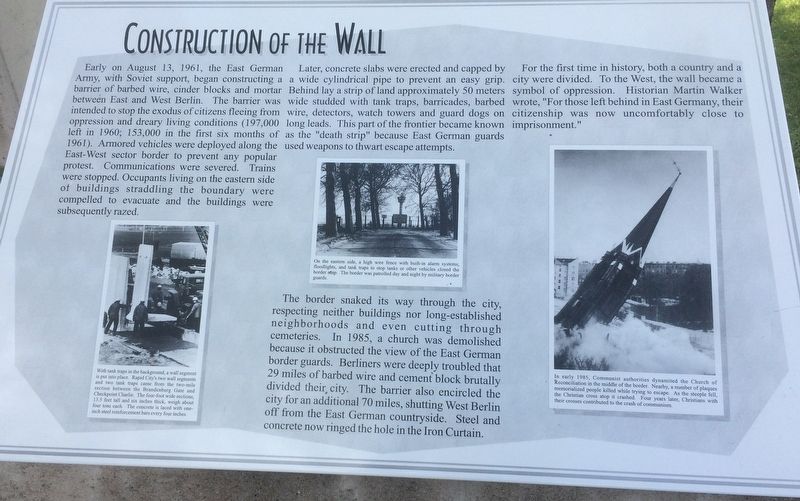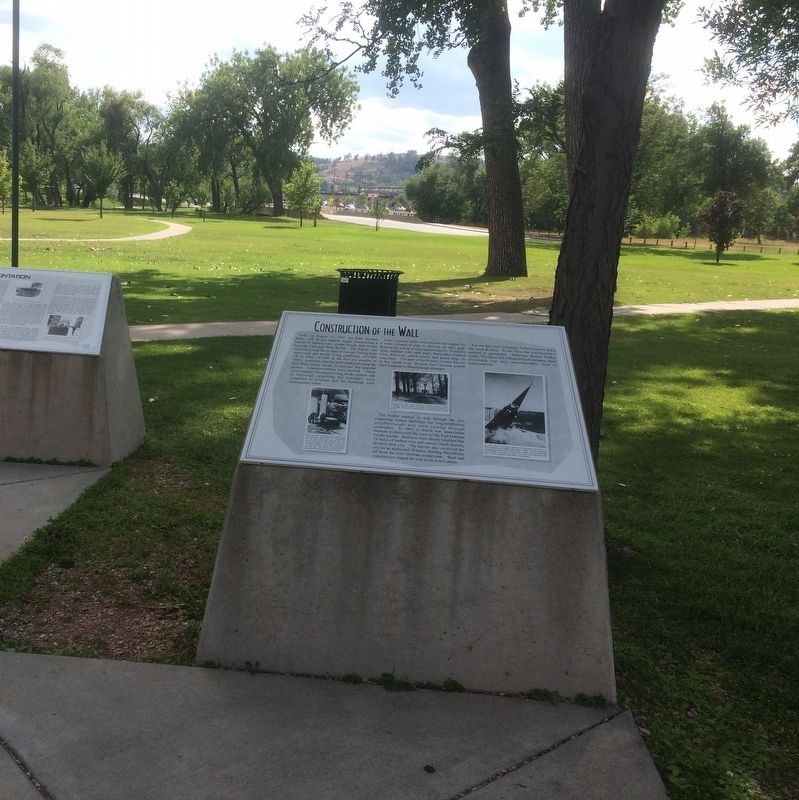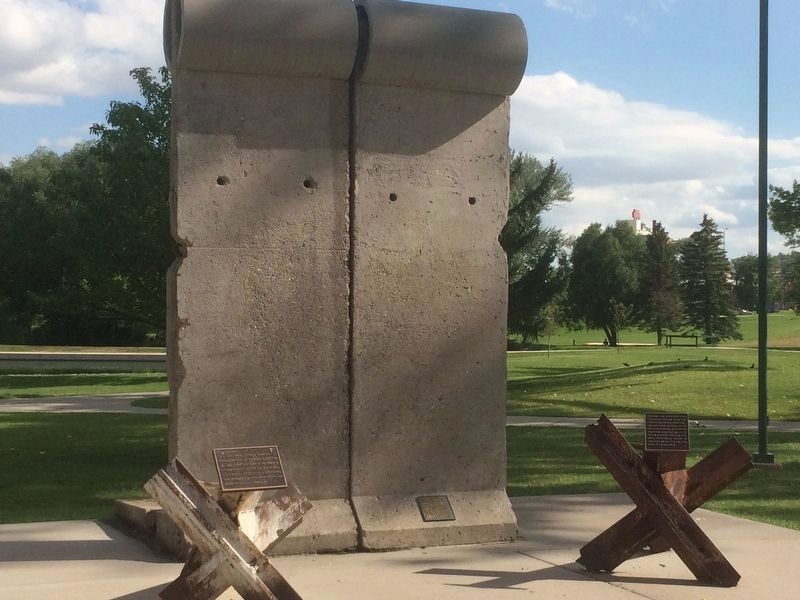Rapid City in Pennington County, South Dakota — The American Midwest (Upper Plains)
Construction of the Wall
The Berlin Wall Memorial
Early on August 13, 1961, the East German Army, with Soviet support, began constructing a barrier of barbed wire, cinder blocks and mortar between East and West Berlin. The barrier was intended to stop the exodus of citizens fleeing from oppression and dreary living conditions (197,000 left in 1960; 153,000 in the first six months of 1961.) Armored vehicles were deployed along the East-West sector border to prevent any popular protest. Communications were severed. Trains were stopped. Occupants living on the eastern side of buildings straddling the boundary were compelled too evacuate and the buildings were subsequently razed.
Later, concrete slabs were erected and capped by a wide cylindrical pipe to prevent an easy grip. Behind lay a strip of land approximately 50 meters wide studded with tank traps, barricades, barbed wire, detectors, watch towers and guard dogs on long leads. This part of the frontier became known as the "death strip" because East German guards used weapons to thwart escape attempts.
The border snaked its way through the city, respecting neither buildings nor long-established neighborhoods and even cutting through cemeteries. In 1985, a church was demolished because it obstructed the view of the East German border guards. Berliners were deeply troubled that 29 miles of barbed wire and cement block brutally divided their city. The barrier also encircled the city for an additional 70 miles, shutting West Berlin off from the East German countryside. Steel and concrete now ringed the hole in the Iron Curtain.
For the first time in history, both a country and a city were divided. To the West, the wall became a symbol of oppression. Historian Martin Walker wrote, "For those left behind in East Germany, their citizenship was now uncomfortably close to imprisonment."
On the eastern side, a high wire fence with built-in alarm systems, floodlights, and tank traps to stop tanks or other vehicles closed the border strip. The border was patrolled day and night by military border guards.
In early 1985, Communist authorities dynamited the Church of Reconciliation in the middle of the border. Nearby, a number of plaques memorialized people killed while trying to escape. As the steeple feel, the Christian cross atop it crashed. Four years later, Christians with their crosses contributed to the crash of communism.
Erected 1996.
Topics. This memorial is listed in this topic list: War, Cold.
Location. 44° 5.172′ N, 103° 13.671′ W. Marker is in Rapid City, South Dakota, in Pennington County. Memorial is on Mount Rushmore Road. The Berlin Wall memorial is located in Memorial Park. Touch for map. Marker is at or near this postal address: 434 N Mt Rushmore Rd, Rapid City SD 57701, United States of America. Touch for directions.
Other nearby markers. At least 8 other markers are within walking distance of this marker. A City Divided (here, next to this marker); Celebrating Victory (here, next to this marker); Confrontation (here, next to this marker); The Berlin Wall Memorial (here, next to this marker); The Cruel Border (a few steps from this marker); The American Commitment (a few steps from this marker); Berlin Wall Segments (a few steps from this marker); Tank Traps (a few steps from this marker). Touch for a list and map of all markers in Rapid City.
Related markers. Click here for a list of markers that are related to this marker.
Also see . . . The Berlin Wall Memorial. (Submitted on July 9, 2019, by Ruth VanSteenwyk of Aberdeen, South Dakota.)
Credits. This page was last revised on July 10, 2019. It was originally submitted on July 9, 2019, by Ruth VanSteenwyk of Aberdeen, South Dakota. This page has been viewed 115 times since then and 15 times this year. Photos: 1, 2, 3. submitted on July 9, 2019, by Ruth VanSteenwyk of Aberdeen, South Dakota. • Bill Pfingsten was the editor who published this page.


